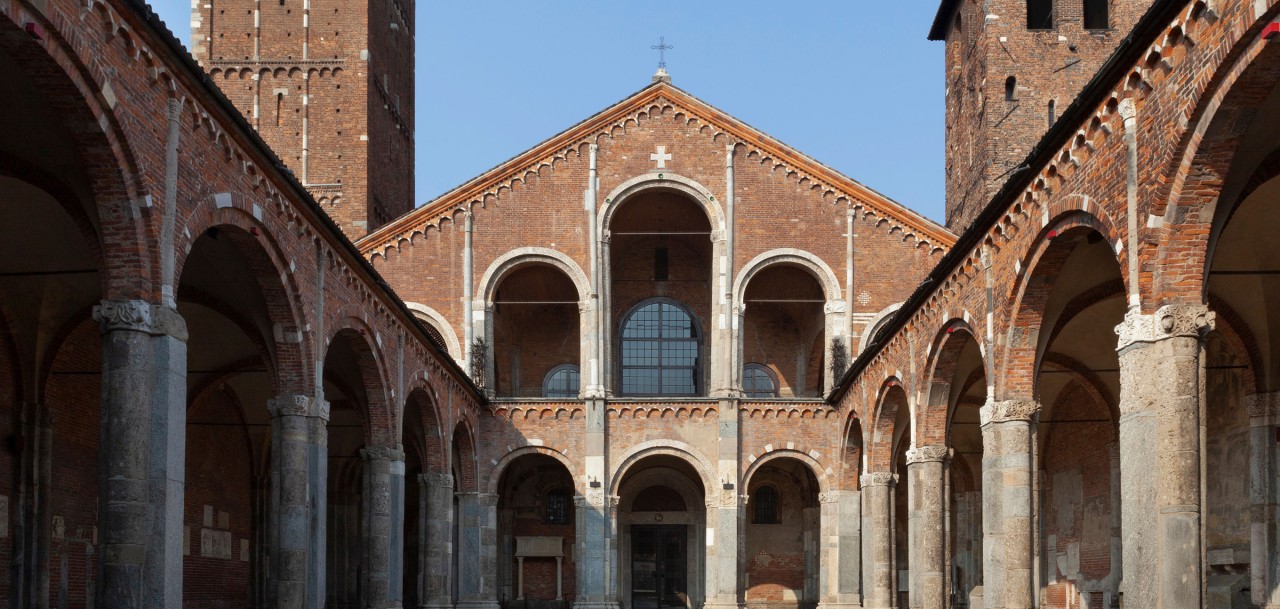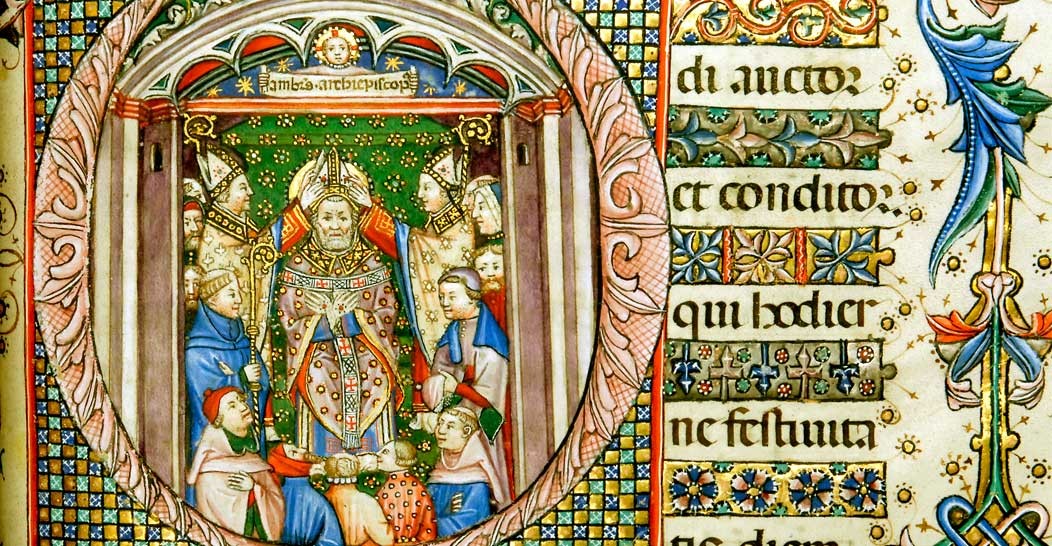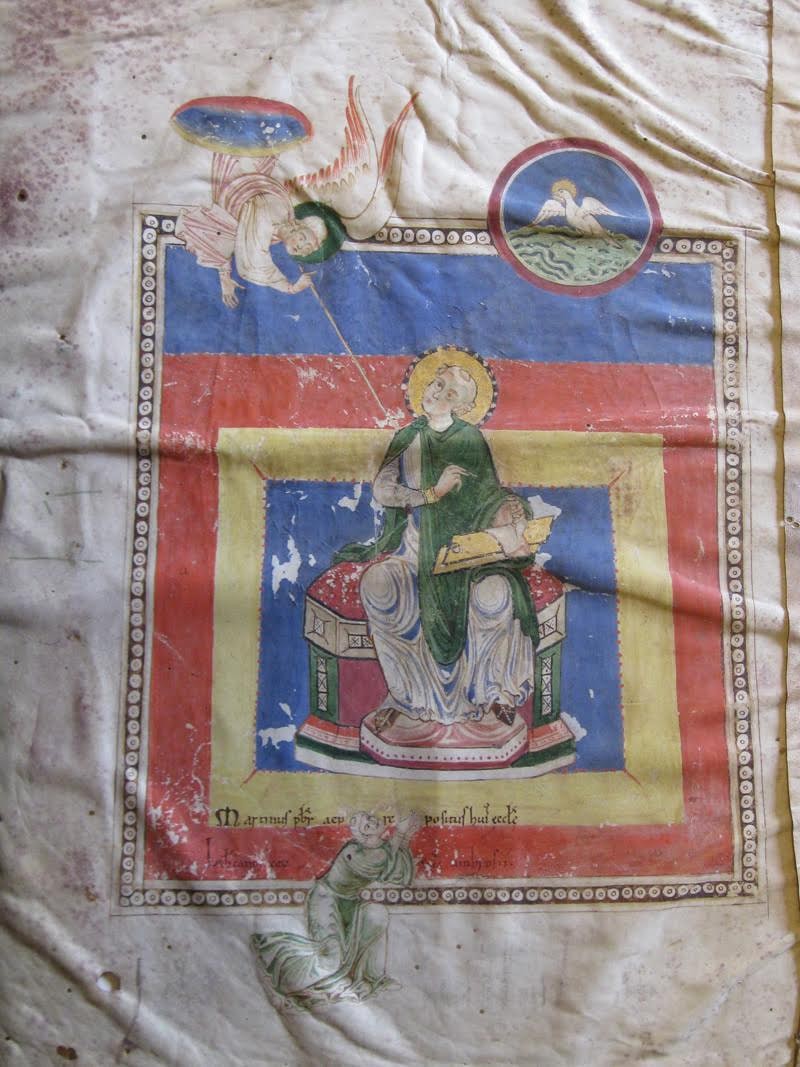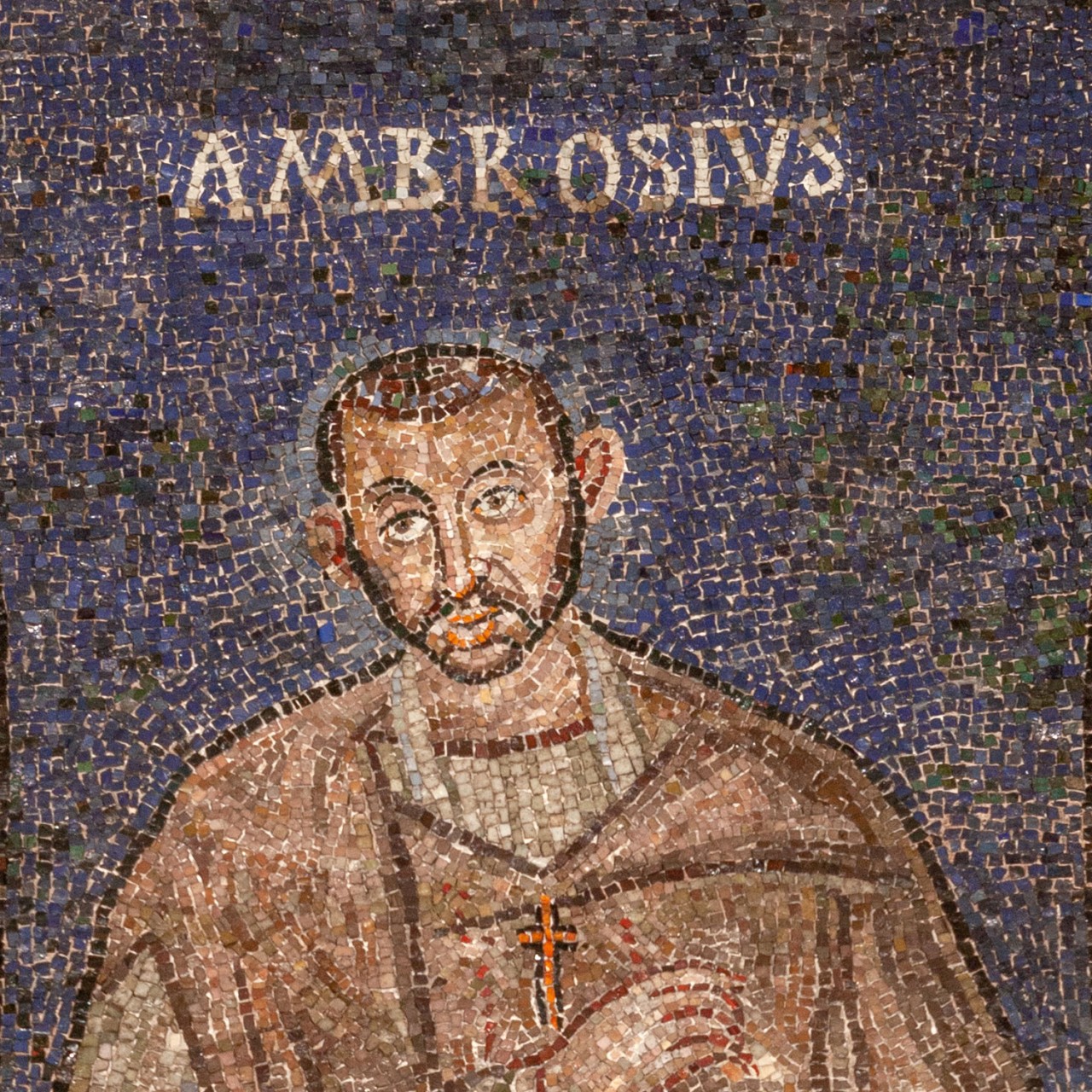Born in Trier between 334 and 340, Ambrose came from a noble senatorial family. After studying in Rome, he practised law with his brother Satyrus in Illyria and then Milan, one of the capitals of the empire. In about 370, Ambrose was appointed governor of the province of Aemilia-Liguria. He was so admired by the populace for his work as a rigorous administrator of justice that when the Arian bishop Auxentius died in 374, Ambrose was acclaimed bishop in a special procedure. In the span of a single week, he was baptised, ordained and, finally, consecrated bishop on 7 December 374.
BISHOP AMBROSE
The ruler of the empire who became a saint
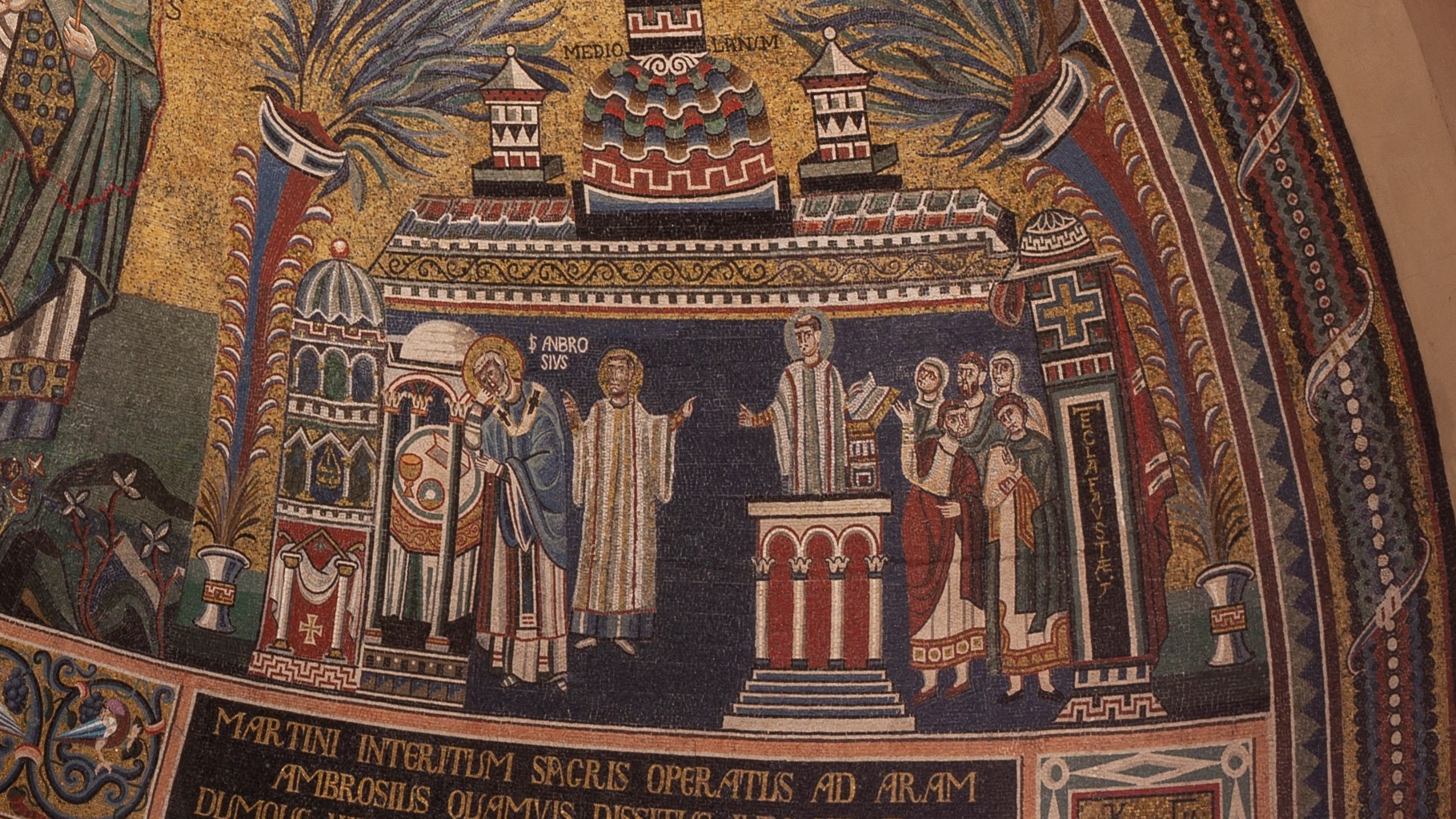
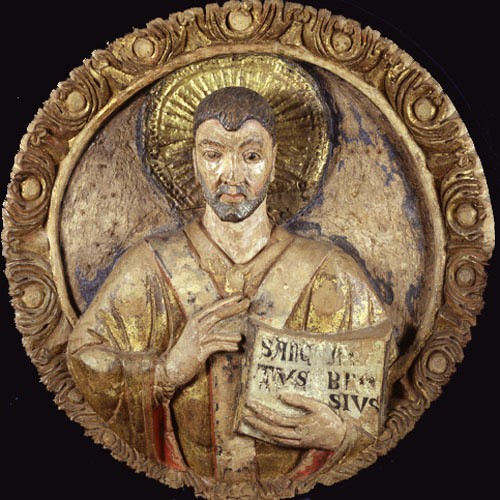
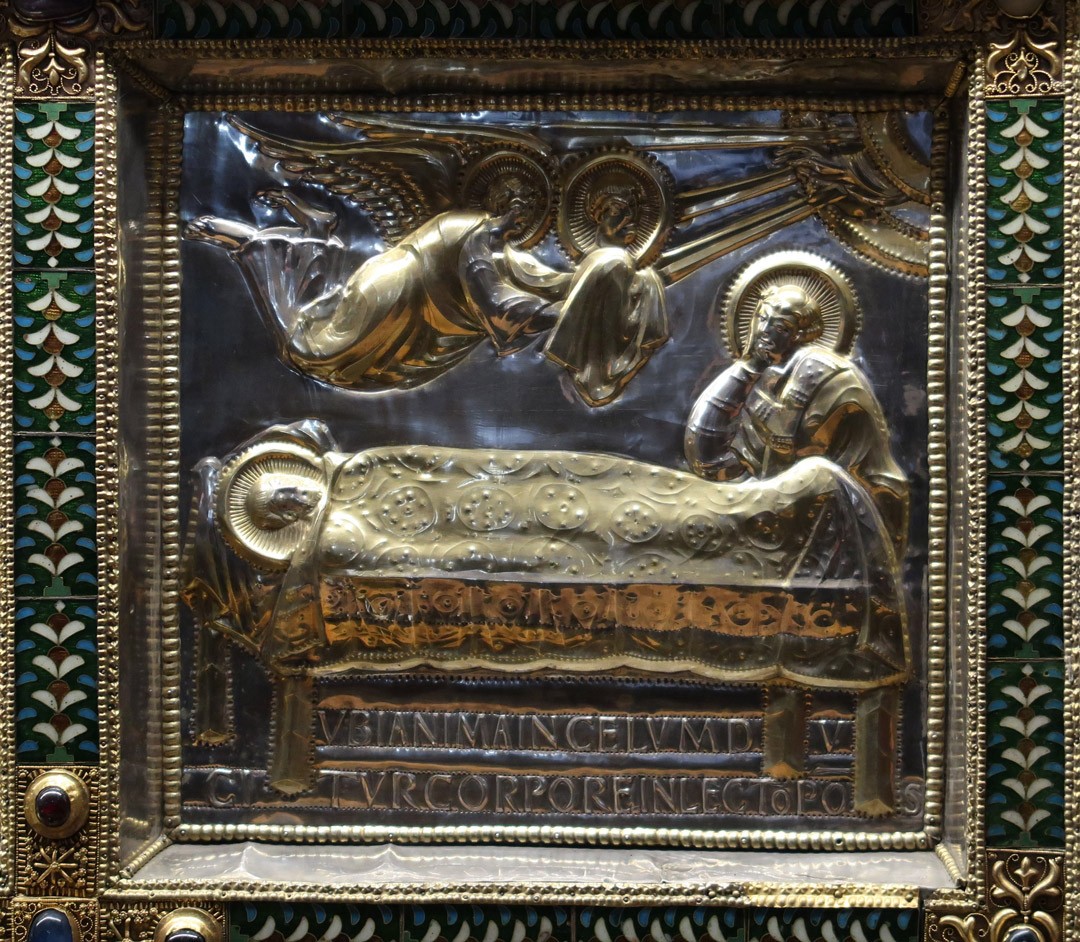
The History
BISHOP AMBROSE
The strong tie between the bishop and his people held fast throughout his entire pontificate. An attentive pastor, sophisticated commentator on the Holy Scriptures and talented politician, Ambrose stepped up to take on the grave problems that tormented the West in the fourth century. On Holy Saturday in 386, he stood firm against the request to hand over a few basilicas to the Arians and wrote liturgical hymns to support the population’s vigils in the occupied churches. And although a friend of Emperor Theodosius, he did not hesitate to refuse him entry into the church until he performed public penitence for the massacre he ordered in Thessalonica. A defender of the faith from heresy, his doctrine represented the official voice of the Western Church. Ambrose revived religious construction in Milan by founding basilicas along the main roads to protect the city.
In June 386, after finding the bodies of Protasius and Gervasius, as he himself reported in a letter to his sister Marcellina, he dedicated the new basilica (Basilica Martyrum) that was being built outside the walls to the martyrs. He always took care to faithfully practise his pastoral ministry and listen to his flock, without making distinctions based on rank or wealth. His preaching convinced Augustine, a professor of rhetoric at the time, to embrace the Christian faith: he was baptised by Ambrose on Easter 387 and became one of the fathers of western thought. Ambrose died on the night between 3 and 4 April 397 and was buried to the left of the martyrs Protasius and Gervasius in the basilica that carries his name. The entire populace of Milan attended his funeral, and the city has remained profoundly tied to the memory of its patron saint ever since.
His numerous commentaries on the Holy Scriptures, fruit of his preaching, were written so that his populace would know and love the Word of God and are of literary import, in particular The Hexameron, a commentary on the first six days of Creation and the beauty of nature, and his broad discussions of Psalm 118 and the Gospel of Luke. He also wrote a few funeral orations for powerful rulers – the emperors Gratian, Valentinian and Theodosius – and his beloved brother Satyrus, for whom he wrote a profoundly moving discourse. When the populace occupied the basilicas in 386 to fight the Arians’ claims, Ambrose composed a few liturgical hymns, which the faithful sang in praise of God during the Liturgy of the Hours.
Rich in vivid images that nourished their faith, the Ambrosian hymns were an enormous success: Augustine noted the four most famous ones, to which many more were added, by Ambrose himself or his later imitators. Ambrose also left numerous letters, which are a source of primary importance for understanding his activity and thought. After his death, St Augustine asked Ambrose’s secretary Paulinus to write a biography, the Life of Ambrose, which presents the saint as a model bishop and enjoyed considerable success over the centuries.
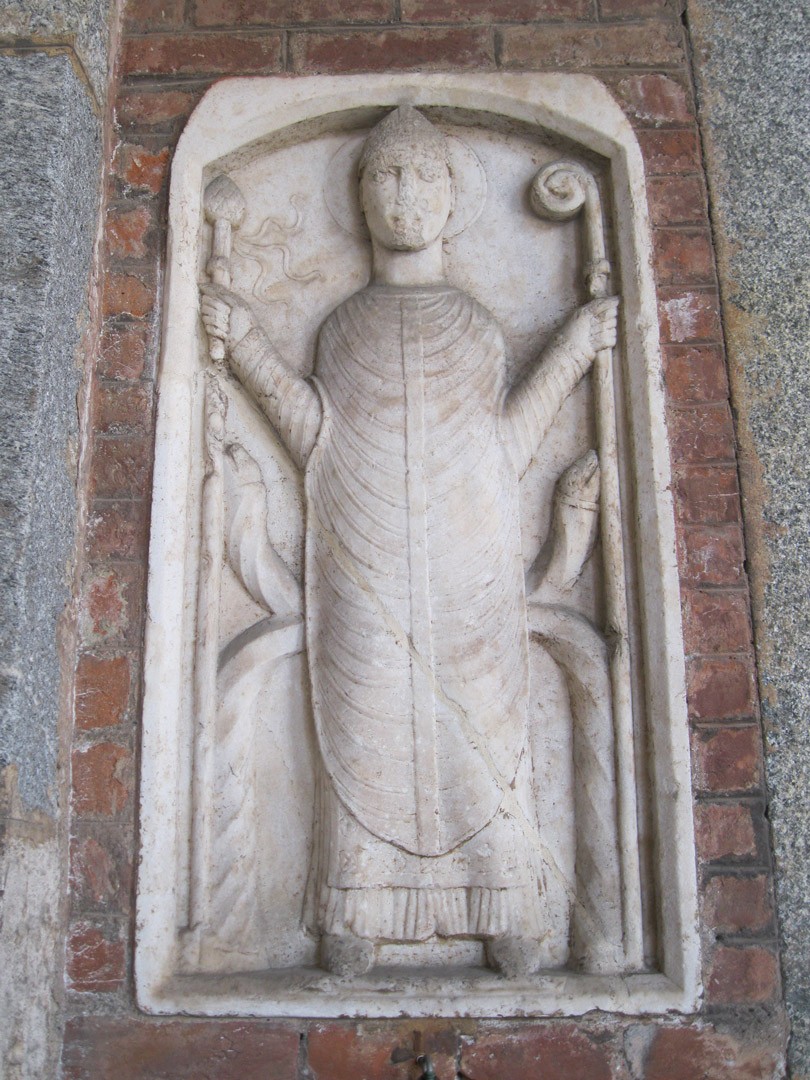
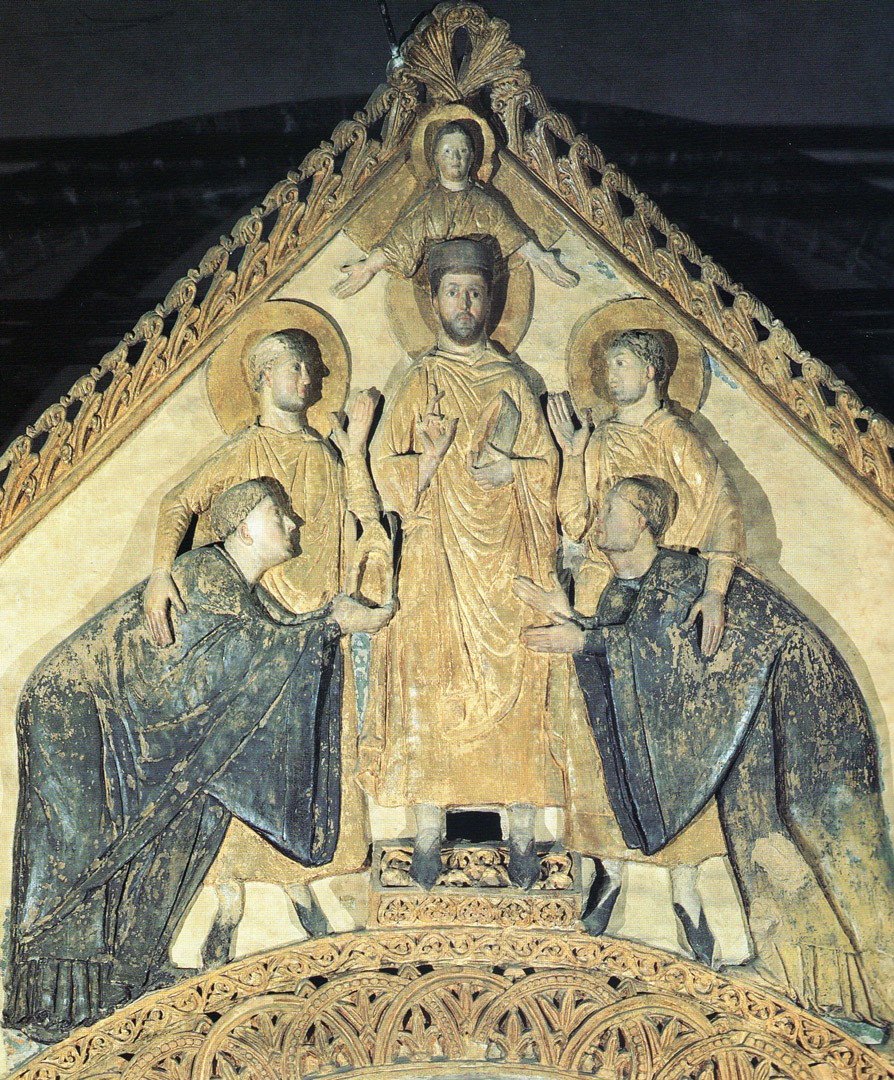
Ambrose’s Legacy
DEFENSOR CIVITATIS: ST AMBROSE, PATRON SAINT OF MILAN
The deep tie between Ambrose and the Milanese was not interrupted by his death. In the fifth century, it was revived in the form of a profound cult devoted to the city’s patron saint and his burial place, the Basilica of Sant’Ambrogio.
In the ninth century, Alcuin of York, cultural advisor of Charlemagne, aptly defined Ambrose as ‘defensor civitatis’, defender of the city and people of Milan. It was during this period that the Milanese Church was first called the Ambrosian Church, in a letter by Pope John VIII. The identity between patron saint and the city consciousness remained constant throughout the entire Middle Ages. Not only had the legacy of Ambrose generated a unique liturgical rite that is still used today, but it also became a civil and political emblem, to the point that the image of the patron saint was emblazoned on the gonfalone del Carroccio, the banner of the chariot carried into battle by the Milanese in the medieval period and also celebrated during the Risorgimento.
The earliest visual representation of St Ambrose is found in the wall mosaic in the sacellum of St Satyrus (fifth-sixth century). Here, the bishop is wearing a dalmatic with clavi (long vertical stripes descending down the front and back from the shoulders) and portrayed with realistic features as the governor of Milan. In the Middle Ages, the iconography of Ambrose followed that of the bishop saint, with mitre, crozier and open book, upon which he is sometimes shown writing, inspired by the Holy Spirit. At the end of the eleventh century, Ambrose started to be portrayed holding a scourge, symbolising the fight against heresy. In the fourteenth century he also began to be shown riding a white charger, trampling the city’s enemies, an image promoted by the Visconti, after the Battle of Parabiago in 1339.

